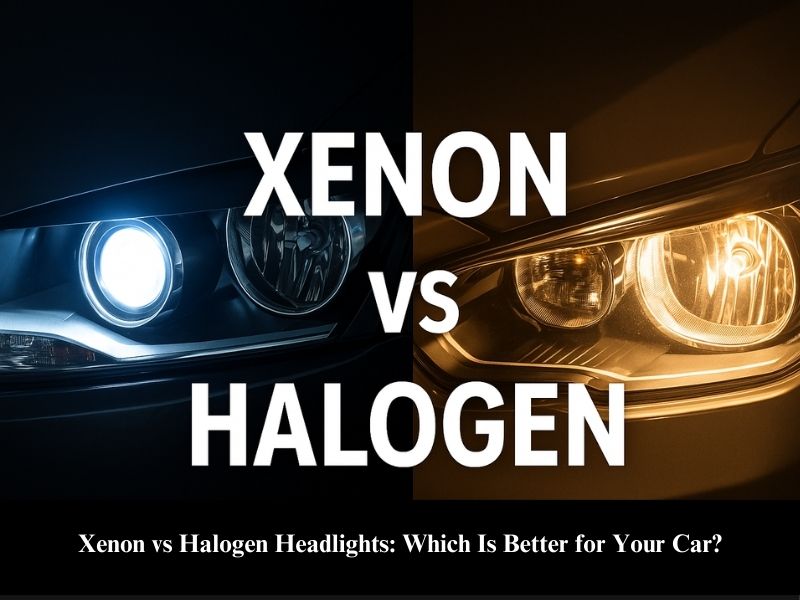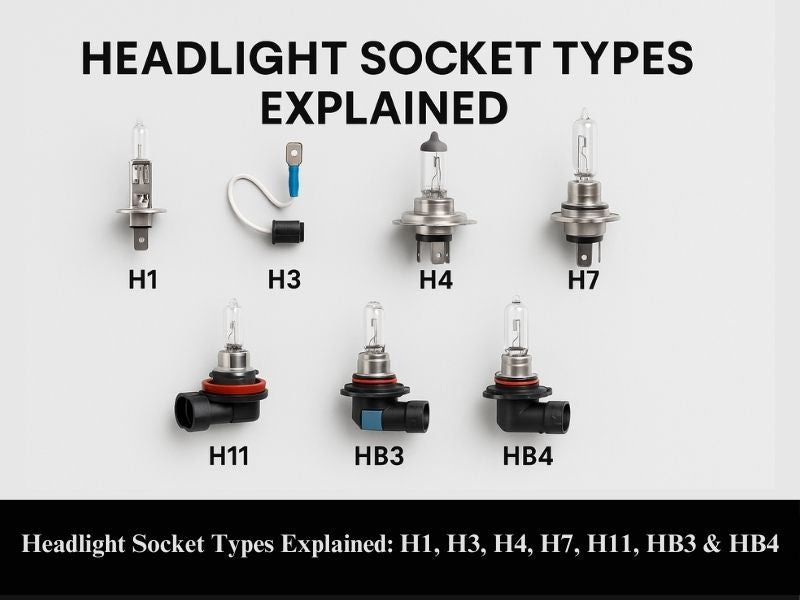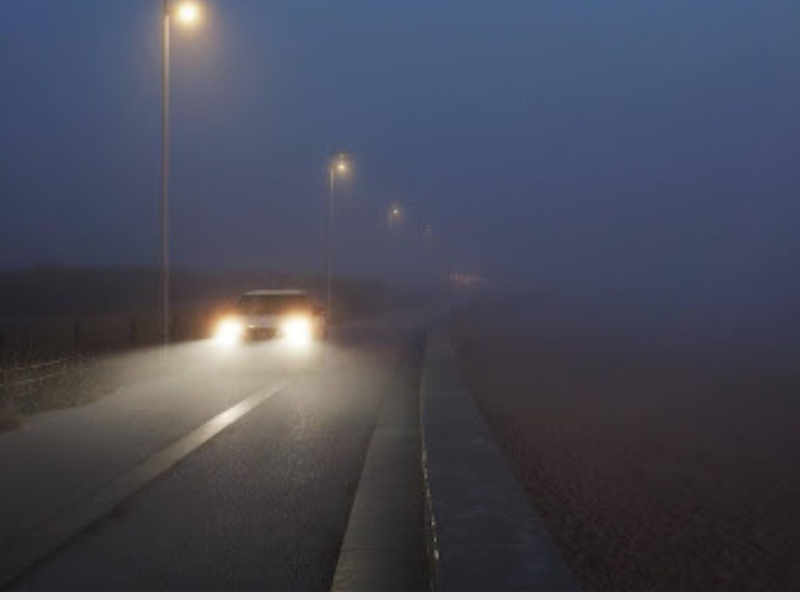It's not just about style when it comes to white and yellow lights. There's a significant purpose behind these colours: they critically influence the amount of light that can pierce through the fog, enhancing your visibility. But what exactly is this crucial role, especially when considering amber vs yellow fog lights? Stay tuned to uncover the mystery.
Table of Content
- Measuring Visibility: The First Steps to Understanding Amber vs Yellow Fog Lights
- The Eyes, the Brain, and Colour Perception
- What's the Science Behind the Colour of Fog Lights?
- Foggy Weather Conditions and the Impact on Eyesight
- Amber vs Yellow Fog Lights: The Differences
- Yellow (Amber) Fog Lights vs. White Fog Lights
- What to Consider When Choosing between Amber vs Yellow Fog Lights and White Fog Lights
- Key Points
- FAQs on Amber vs Yellow Fog Lights
Measuring Visibility: The First Steps to Understanding Amber vs Yellow Fog Lights
When we talk about amber vs yellow fog lights, understanding visibility is key. But how is visibility measured? It's through the Visibility Index (VI), a scale that ranges from 1 to 10. With 10 being high visibility and 1 being low visibility.
This index shows how well you can see with the naked eye in various conditions. For fog lights, knowing where your car's VI falls is crucial.
Furthermore, the colour of your fog lights has an impact on their performance in various situations depending on your car. VI falls on the spectrum. So, some things you should consider include:
Glare and Its Impact
Glare, especially at night, is a significant concern. It occurs when light reflects off surfaces like wet roads, causing visibility to drop. White fog lights tend to produce more glare than yellow ones. This is because white light is more concentrated and scatters less.
The Brightness Factor
Yellow lights, historically the norm for fog lights, filter light to reduce glare. This makes it easier to see and for others to spot you. However, white lights have gained popularity for their brightness.
Colour Temperature Confusion
Many think higher Kelvin equals brighter light. But this is a misconception. Colour temperature relates to perception, not actual brightness.
While white fog lights often range from 5000 to 6000 kelvins, yellow ones vary between 2000 and 3000. This difference is crucial for understanding amber vs yellow fog lights.
So, what should you choose? Amber or yellow? The answer isn't straightforward. Each one has different benefits.
The Eyes, the Brain, and Colour Perception
Understanding colour perception is vital in the amber vs yellow fog lights debate. But how do our eyes and brain work together to perceive colour? Here's a simple explanation:
- Light and Color Perception: Our eyes capture light, which our brain processes to recognize colours. For example, we see green objects as green because they reflect green wavelengths and absorb others.
- The Challenge in Fog: In fog, this process gets trickier. Fog disperses light, making it hard to see clearly. Our eyes are sensitive to specific wavelengths, with yellow light at 589nm and white light at 695nm.
- Visibility in Fog: During fog, objects don't just reflect or absorb light; they also let some light pass through. This means multiple colours reach our eyes, complicating our colour perception.
What’s the Science Behind the Colour of Fog Lights?
When considering amber vs yellow fog lights, the science behind their colour is fascinating. Here's a breakdown of why the colour of your fog lights matters:
- Light Intensity and Visibility: Brighter light doesn't always mean better visibility. In fact, too much light can scatter in fog, reducing visibility. It's similar to how overly bright streetlights can seem glaring in the daytime.
- The Role of Wavelength: The wavelength of light plays a crucial role in how it interacts with fog. Think of it like throwing different sized rocks at windows: smaller rocks (shorter wavelengths) can pass through easier than larger rocks (longer wavelengths).
So, with this in mind, is white light with its longer wavelength always the best choice? Or does the shorter wavelength of yellow light offer an advantage in fog? Stay tuned as we explore more about amber vs yellow fog lights and their impact on your driving experience!
Foggy Weather Conditions and the Impact on Eyesight
Navigating through fog is tricky. Your choice between amber vs yellow fog lights significantly impacts your ability to see. When it comes to headlights and fog lights, they create a particular wavelength that allows our eyes and brain to see. But in some situations, this can be tough. Especially when you’re driving at night, your pupils become smaller in size.
This happens to keep out all the extra lights being emitted by surrounding lights. So, sudden bursts of headlights can be very difficult for your eyes to bear. Yes, this is also the case, even though we can usually see them just fine when driving in normal lighting conditions.
However, because yellow lights lie towards the centre of the visible spectrum, your eyes find it easier to perceive them more accurately. Thus, this helps to increase visibility even when there are unfavourable weather conditions such as snow, fog, or rain.
Whereas when it comes to white light, it has a longer wavelength. This makes it difficult for your brain to accurately process information accurately during low visibility conditions.
Amber vs Yellow Fog Lights: The Differences
When choosing between amber and yellow fog lights, understanding the subtle differences is crucial. Let's dive into the specifics:
- Optical Differences: Scientifically, yellow light has longer wavelengths compared to amber light. However, to the naked eye, this difference might not be immediately noticeable.
- The Characteristics of Amber Lights: Amber lights mix red and yellow, creating a warm and less harsh glow. They belong to the high-intensity discharge (HID) category, offering more lumens per watt than standard bulbs.
- Yellow Lights and Their Composition: Yellow headlights may contain pure yellow or a mix of yellow and green, resulting in a brighter glow than amber LED fog lights. This yellow-green hue is popular for fog lights due to its neutral and clear visibility.
With these details in mind, how do car manufacturers decide between amber LED fog lights and yellow ones? And more importantly, how should you choose? Keep reading as we delve deeper into the world of amber vs yellow fog lights and their practical applications!
Yellow (Amber) Fog Lights vs. White Fog Lights
The debate between amber vs yellow fog lights and white fog lights boils down to various factors. Let's break it down:
Understanding Wavelengths
Yellow light has a shorter wavelength and is less intense, making it more visible in certain conditions because of the short wavelength. White light, with its longer wavelength, is more intense in comparison to yellow light. Because of this, it results in glare and high reflection.
Due to this, when it comes to low visibility conditions, yellow lights are much more preferable. During high visibility, white lights are suitable. So, when it comes to standard driving conditions where there is moderate visibility, white lights are a good option.
Reflection and Visibility in Fog
Fog particles scatter light, making visibility challenging as it reflects light towards you. It’s like driving through a cloud that has so many tiny mirrors in it. This makes it difficult for you to see anything in the road ahead.
However, when it comes to yellow lights, they do not reflect like white lights during foggy conditions. So, when you're driving through fog, you can easily see without getting blinded by the headlight beams that reflect from the vehicle in front of you. It also prevents your own vehicles headlamps from reflecting off those fog particles.
Effectiveness in Different Conditions
In weather conditions where visibility is low, yellow lights are a better option in comparison to white ones. This is because they produce a more dispersed beam of light, which is efficient when it comes to getting over a large area quickly, especially when there is low visibility.
When it comes to areas that have higher visibility, such as thinner fog or night driving conditions that have no fog at all, white lights are a better option in comparison to yellow. This is because they emit a much more concentrated beam of light that has much more capacity to penetrate through the environment. This is perfect for seeing further down the road and into blind spots.
Daytime vs. Nighttime Usage
While white light is great for nighttime, providing clear visibility, yellow light offers better contrast in low-light conditions, such as fog or rain.
So, in the amber vs yellow fog lights discussion, which colour is truly the best for your driving needs? Is it the yellow light with its better fog penetration or the white light with its clear night visibility? The answer might not be as straightforward as you think!
What to Consider When Choosing between Amber vs Yellow Fog Lights and White Fog Lights
Choosing between amber vs yellow fog lights and white fog lights can be confusing. Let's simplify it for cautious drivers:
When to Choose Yellow Lights
In heavy fog and low-visibility conditions, yellow lights are superior. They spread light quickly over a smaller area, reducing glare for other drivers. However, yellow light can be less visible during the day as the human eye adjusts slower to it.
The Advantage of White Lights
White lights are more effective in higher visibility situations, such as thinner fog or clear night conditions. They penetrate further, helping you see into blind spots. In heavy rain or snowstorms, white light illuminates the road better, cutting through inclement weather more effectively than yellow.
Considering the Environment
If you're driving in high humidity, white lights might be more beneficial as yellow lights could reflect off moisture, obscuring visibility.
Safety and Consideration
Regardless of the fog light colour, using them responsibly is crucial. Be mindful of other drivers, especially when using high beams in poor weather conditions.
So, which is better in the amber vs yellow fog lights debate? It really depends on your specific driving conditions and needs. Remember, the right choice in fog lights, combined with safe driving practices, can significantly enhance your driving safety.
Key Points
- When we talk about amber vs yellow fog lights, understanding visibility is key.
- White fog lights tend to produce more glare than yellow ones. This is because white light is more concentrated and scatters less.
- Yellow lights, historically the norm for fog lights, filter light to reduce glare.
- While white fog lights often range from 5000 to 6000 kelvins, yellow ones vary between 2000 and 3000.
- Scientifically, yellow light has longer wavelengths compared to amber light.
- When it comes to yellow lights, they do not reflect like white lights during foggy conditions.
- In low visibility, yellow lights are a better option in comparison to white ones. This is because they create a more dispersed beam of light.
- The decision on Amber vs Yellow fog lights really depends on your specific driving conditions and needs.
FAQs on Amber vs Yellow Fog Lights
- What are the main differences between amber and yellow fog lights?
Amber fog lights tend to have a warmer glow and blend red and yellow wavelengths. Yellow fog lights, on the other hand, may include a mix of yellow and green wavelengths, providing a brighter light.
- How does light wavelength affect fog light performance?
Shorter wavelengths, like those in yellow lights, are less intense and more visible in foggy conditions. Longer wavelengths, as in white lights, are more intense and can cause glare.
- Are yellow fog lights better in foggy conditions?
Yes, yellow fog lights are generally better in fog due to their ability to reduce glare and offer clearer visibility without overwhelming the driver's eyes.
- When should I use white fog lights?
White fog lights are preferable in conditions of higher visibility, like clear nights or thinner fog, as they offer a more concentrated beam of light for further road penetration.
- Can the colour of fog lights affect visibility during the day?
Yes, it’s harder to see yellow light during the daytime. The reason for this is, human eyes take more time to adjust to yellow light in comparison to blue light.
- What should I consider when driving in high humidity with fog lights?
In high humidity, white fog lights might be more effective as yellow lights could reflect off the moisture, reducing visibility.
- Is it important to consider other drivers when using fog lights?
Absolutely. It's vital to use fog lights responsibly, especially in poor weather conditions, to avoid causing visibility issues for other drivers.
- Do fog lights play a role in safety during rain or snowstorms?
Yes, white fog lights are generally better in heavy rain or snowstorms as they illuminate the road more effectively, whereas yellow lights may struggle in these conditions.




